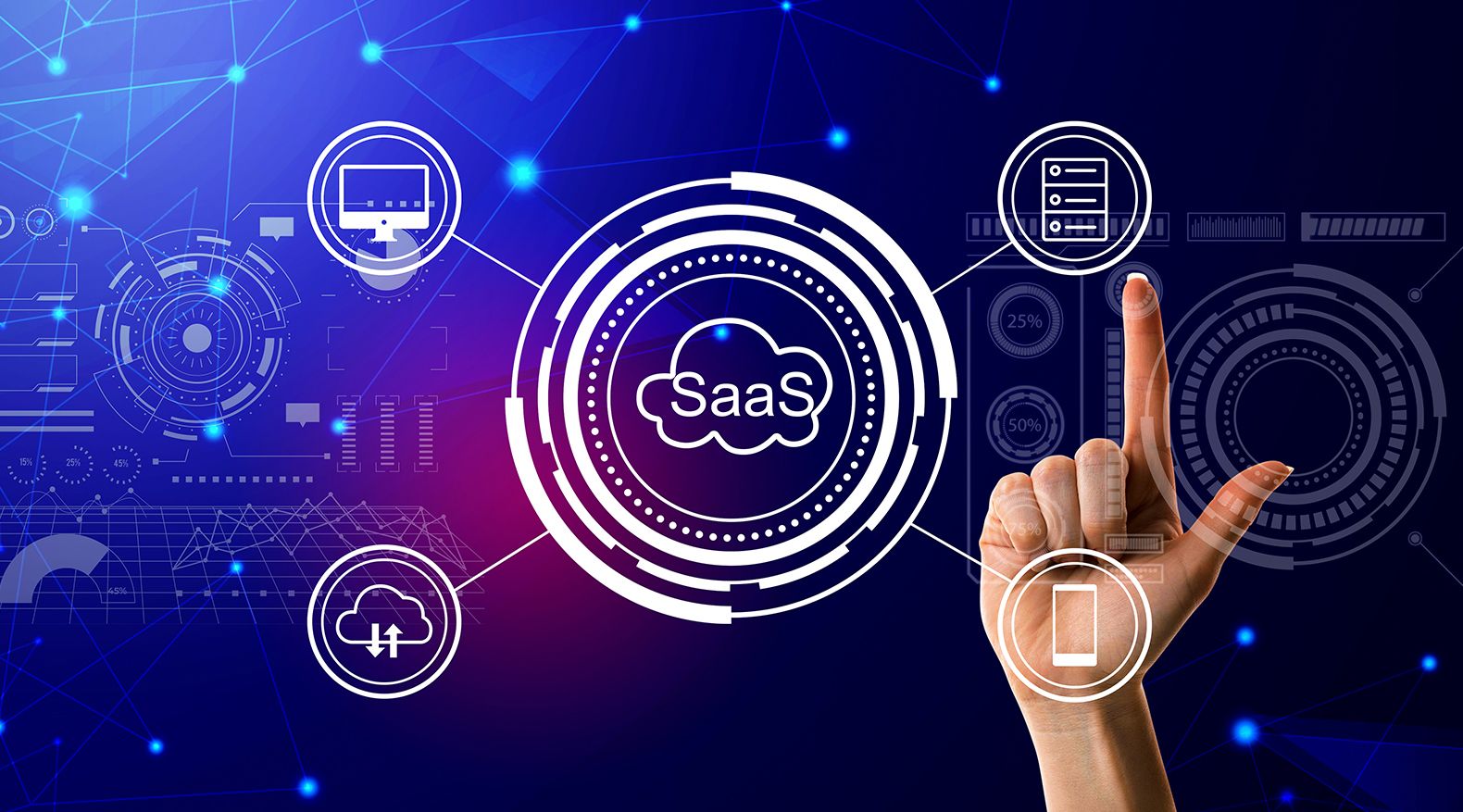SaaS Growth for USA Businesses in 2025: Key Trends Driving the Future of Software

In the USA, the Software as a Service (SaaS) sector is changing how companies function. Cloud computing has accelerated software adoption across industries, thereby driving a massive shift towards scalable, cost-effective solutions. SaaS is expected to experience rapid growth in 2025 due to developments in automation, artificial intelligence (AI), and remote work infrastructure.
In recent years, the U.S. SaaS market growth has been exceptional. At the end of 2024, SaaS spending in the USA was projected to have reached approximately $300 billion. Consequently, the demand for flexible, subscription-based software solutions continues to grow, fueling innovations and strategic shifts among SaaS providers. As competition intensifies, businesses must stay ahead of emerging trends so that they can maximize growth opportunities and address evolving customer needs.
This article explores the key trends driving SaaS growth in the USA, emerging business opportunities, and what the future holds for software as a service.
The Rise of SaaS in the USA
The U.S. has long been a global leader in cloud adoption, with many of the world's top SaaS companies headquartered in Silicon Valley and other tech hubs. From small startups to enterprise-level corporations, businesses across industries are leveraging SaaS solutions to enhance productivity, reduce IT infrastructure costs, and improve customer experience.
SaaS is becoming more and more popular in the USA for a number of reasons:
First off, subscription-based pricing lowers upfront costs by allowing businesses to pay only for the functionality they require; additionally, it enables businesses to rapidly scale up or down in response to demand without having to make significant hardware investments.
In a similar vein, cloud-based apps provide effective teamwork across geographical boundaries. Most significantly, SaaS providers take care of software maintenance, guaranteeing clients always have access to the newest features and security patches.
As a result, the SaaS market is still changing, and significant trends are starting to emerge that will influence the sector going forward in 2025 and beyond.
Key SaaS Growth Trends for USA Businesses in 2025
1. AI-Powered SaaS Solutions
With its introduction of sophisticated automation, data-driven insights, and customized user experiences, artificial intelligence is revolutionizing the Software as a Service (SaaS) sector. For instance, AI-driven SaaS applications are becoming mainstream, helping businesses optimize workflows, automate repetitive tasks, and enhance customer engagement.
Machine learning models embedded into SaaS platforms are improving decision-making capabilities by analyzing vast amounts of data in real time. Additionally, AI chatbots, intelligent automation tools, and predictive analytics are now essential components of SaaS solutions across various industries, from healthcare to finance.
The U.S. market is seeing an increased focus on smaller, more efficient AI models that provide reliable and cost-effective performance. However, with rapid AI adoption comes increased scrutiny over data security and compliance, pushing SaaS providers to enhance security measures.
2. Rise of Vertical SaaS Solutions
The demand for industry-specific SaaS solutions, known as vertical SaaS, is skyrocketing. Vertical SaaS solutions, as opposed to generic SaaS platforms, serve specialized businesses by providing features that are suited to the demands of particular sectors.
For instance, industries benefiting from vertical SaaS include:
Healthcare (EHR systems, telemedicine platforms)
Financial Services (risk management, automated compliance software)
Retail & E-commerce (inventory management, customer loyalty programs)
Manufacturing (supply chain optimization, smart factory solutions)
Because of this, the vertical SaaS market is projected to exceed $157.4 billion in 2025; this segment presents lucrative opportunities for entrepreneurs looking to enter specialized software markets.
3. Expansion of Low-Code and No-Code SaaS Platforms
Software development is being revolutionized by the emergence of low-code and no-code platforms, which enable non-technical users to create and modify applications without requiring a deep understanding of code. Thus, this trend is democratizing software development, enabling businesses to deploy custom applications faster and at a lower cost.
In particular, startups and small businesses benefit from these platforms, as they allow the creation of workflows, process automation, and customer-facing applications without relying on expensive development teams.
Given this, the adoption of these platforms is expected to rise significantly in 2025, making software development more accessible than ever before.
4. Focus on Cybersecurity and Data Privacy
Businesses are growing increasingly concerned about cybersecurity risks as a result of their growing reliance on SaaS solutions. Notably, the surge in cyberattacks and data breaches has pushed SaaS providers to prioritize security features such as multi-factor authentication (MFA), zero-trust security models, and end-to-end encryption.
Additionally, regulatory compliance requirements (such as GDPR, CCPA, and HIPAA) are forcing SaaS companies to implement stricter data privacy policies. Businesses that ignore security issues run the danger of losing clients and getting into trouble with the law.
5. Market Consolidation and Mergers
The SaaS market is becoming increasingly competitive, leading to market consolidation through mergers and acquisitions. As a result, in order to increase their product offerings and market reach, bigger SaaS companies are purchasing smaller startups. In 2025, this trend of consolidation is anticipated to continue as businesses look to bolster their competitive edge.
This offers opportunities as well as problems for companies wishing to get into the SaaS market. While consolidation may increase competition, it also creates opportunities for innovation and niche market positioning.
6. Evolution of Pricing Models
Traditional subscription-based pricing is evolving, with many SaaS providers shifting towards more flexible pricing structures. Because they enable organizations to pay only for what they use, usage-based pricing, tiered subscriptions, and pay-as-you-go models are growing in popularity.
Therefore, by making SaaS products more affordable for a wider spectrum of companies, from startups to major corporations, these dynamic pricing models enhance client retention.
The Role of SaaS in Enhancing Customer Experience
Customer experience (CX) is a critical factor in business success, and SaaS solutions are playing an integral role in reshaping how companies engage with their customers. Advanced SaaS tools offer businesses the ability to provide seamless, personalized experiences through automation, AI-driven analytics, and omnichannel communication strategies.
Furthermore, SaaS platforms enable companies to track customer interactions in real time, helping them analyze behavior and predict future needs. Virtual assistants and chatbots driven by AI are integrated to provide prompt answers to questions, cutting down on response times and raising customer satisfaction.
Moreover, CRM-based SaaS solutions are helping businesses streamline customer data management, ensuring personalized experiences and enhanced engagement. The ability to integrate customer service tools with other business applications enhances efficiency and ensures a consistent brand experience across multiple touchpoints.
As businesses continue to prioritize customer satisfaction, SaaS solutions will play a crucial role in delivering exceptional digital experiences. Companies that leverage cutting-edge SaaS tools for customer engagement will stay ahead of the competition in 2025 and beyond.
SaaS Business Opportunities in 2025
For entrepreneurs and investors, the SaaS sector presents numerous growth opportunities in the U.S. market:
Targeting specialized industries with vertical SaaS services catered to particular company needs;
Creating AI-powered SaaS solutions that improve automation and efficiency.
To address the escalating security risks, it is also critical to invest in cybersecurity solutions.
In order to facilitate quicker application development, low-code and no-code platforms are being investigated further.
Finally, in order to draw in a variety of clientele, adaptable pricing schemes must be developed.
By identifying these opportunities and leveraging emerging technologies, businesses can position themselves as key players in the evolving SaaS ecosystem.
The Future of SaaS in the USA
In the future, innovation, security improvements, and growing enterprise use will propel the U.S. SaaS market's rapid growth. Moreover, several trends will shape the future of SaaS in 2025 and beyond:
Hyper-Personalization: AI-driven SaaS solutions will offer tailored user experiences based on real-time data insights. Companies will examine user behavior using machine learning algorithms to make sure software dynamically adjusts to each user's demands. This tendency will improve operational effectiveness and consumer happiness.
Integration of Edge Computing: SaaS platforms will make use of edge computing to improve real-time processing capabilities and lower latency. Businesses can enhance application performance and reliability by processing data closer to the source, which is particularly important for sectors that depend on real-time analytics.
Greater Emphasis on ESG Compliance: SaaS companies will prioritize environmental, social, and governance (ESG) factors, aligning with corporate sustainability goals. Organizations will integrate carbon footprint tracking tools and ethical AI frameworks, ensuring responsible SaaS deployment.
5G-Powered SaaS Applications: Faster connectivity will enhance SaaS performance, improving real-time collaboration and cloud-based services. With lower latency and higher speeds, industries like healthcare, finance, and manufacturing will experience seamless cloud computing, driving digital transformation at an unprecedented scale.
Conclusion: Lead with SaaS and Scale Smarter with Cloud
SaaS in the USA has a promising future thanks to ongoing innovation and industry acceptance. As businesses increasingly shift towards digital-first strategies, SaaS will play a pivotal role in enhancing efficiency, security, and scalability. Furthermore, organizations that embrace AI-driven automation, advanced cybersecurity frameworks, and seamless cloud integrations will gain a competitive edge in 2025 and beyond.
Businesses may improve decision-making, streamline procedures, and customize user experiences by utilizing AI. Automation will streamline operations, reducing manual effort and enhancing productivity. Additionally, robust cybersecurity measures will be essential to protecting sensitive data, ensuring compliance with evolving regulations, and maintaining customer trust.
To stay ahead, businesses must proactively adapt to emerging trends, such as edge computing, ESG compliance, and 5G-powered applications. Those that strategically integrate these advancements can lead with SaaS, scale smarter with the cloud, and drive long-term growth in an increasingly digital world. The future belongs to companies that innovate, embrace agility, and harness the full potential of SaaS.
